I love making brioche. The dough is super silky and smooth, and if you let it mix long enough, it’s a dream to handle.
It’s a very enriched dough with lots of eggs and A LOT of butter. Adding all this fat means the dough reacts differently than standard bread dough. The high butter content slows gluten development, so the initial kneading process is pretty slow.
Brioche develops over several stages and the look and feel of the dough change throughout. The first stage is mixing everything except the butter. This is so you can start developing the gluten before the butter is added.
Then, the butter is added in, a bit at a time. Butter brings in fat and liquid, so the dough will become slack and sticky with all this moisture and fat. Once the butter has been added, it’s time to develop the gluten further. The dough will be sticky but keep mixing and it will come together and become glossy and strong.
Once you’ve made your brioche, you can eat it warm and fresh. It will be soft and tender when it’s freshly baked. Over the following days, it can stiffen up a bit because of all the butter in there. You can soften it again in the microwave or use it when it’s a bit stale in recipes like French toast, Bostock, or bread pudding. In these recipes, eggs, milk, or syrup are used, and the brioche soaks them up like a sponge.
Brioche Bread
You can find the printable recipe on my blog here.
Ingredients
125 g milk lukewarm (95-104°F / 35-40°C)
2 ½ teaspoons instant yeast or active dried yeast
50 g granulated sugar
600 g all-purpose flour
1 ½ teaspoons salt
5 large eggs
230 g unsalted butter at room temperature, cubed
Method
Add the milk, stir in the yeast, and one tablespoon of sugar in a stand mixer bowl fitted with a dough hook. Leave it to sit for 5-10 minutes until foamy. Add to it the remaining sugar, eggs, flour, and salt. Turn the mixer on low and combine until it forms a thick but slightly sticky dough. Mix this dough for around 5 minutes to begin developing the gluten.
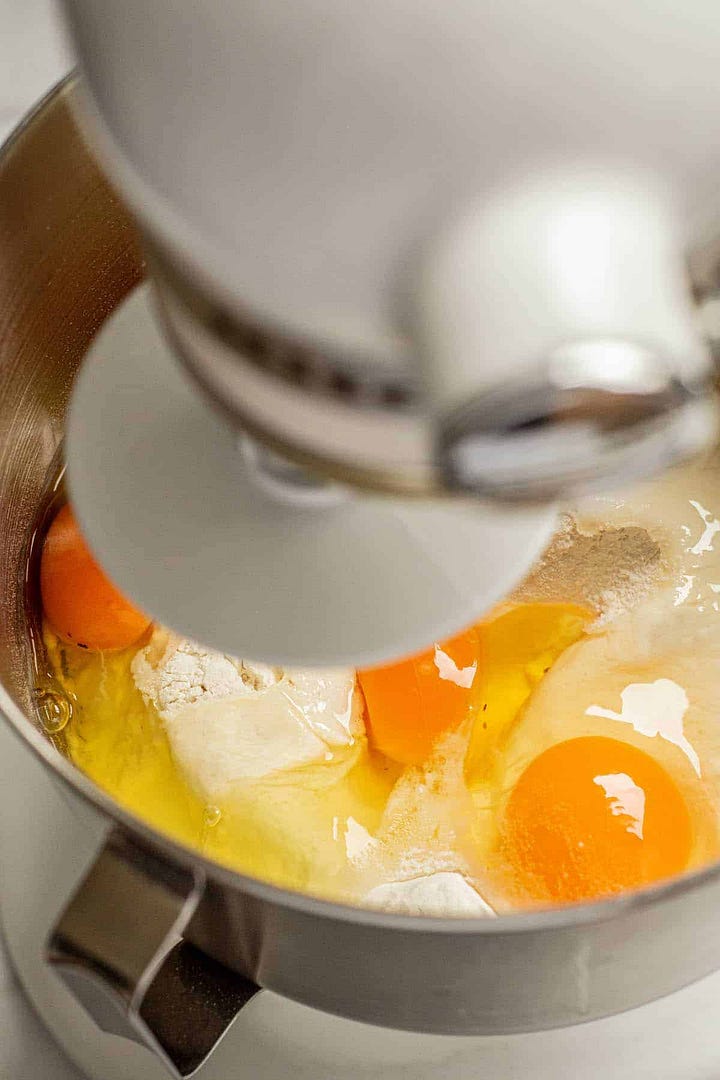
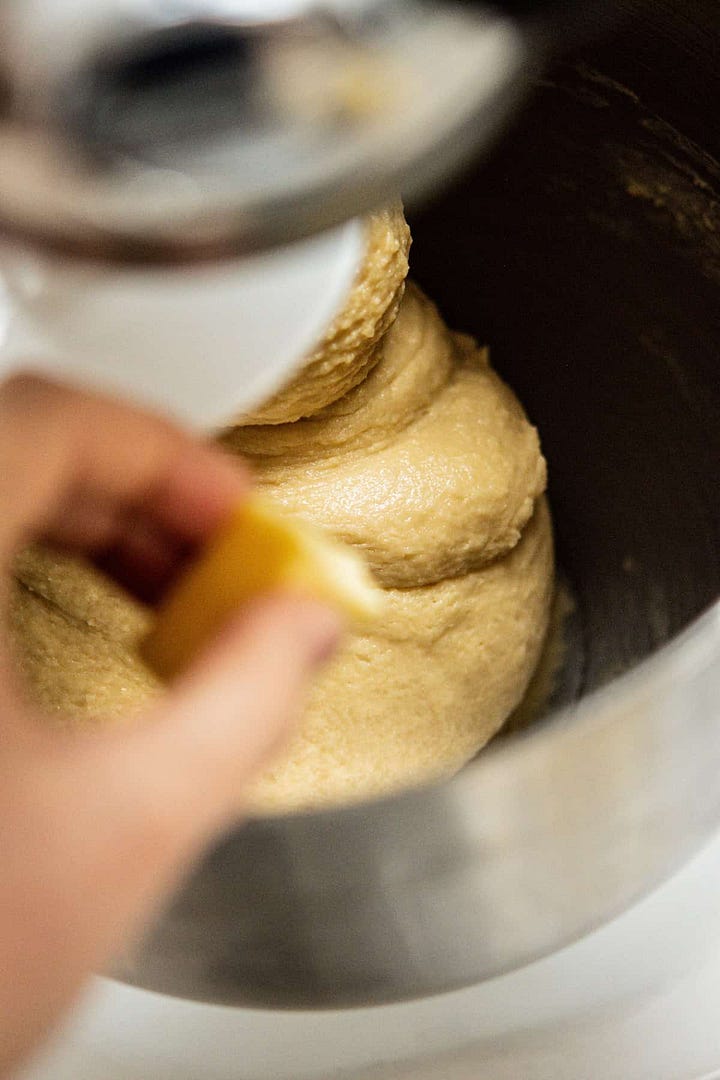
Add in the butter, a cube or two at a time, ensuring each cube has been incorporated before the next addition. Turn the mixer on medium and keep it mixing until the sticky dough starts to strengthen and come together and pull away cleanly from the sides of the bowl.

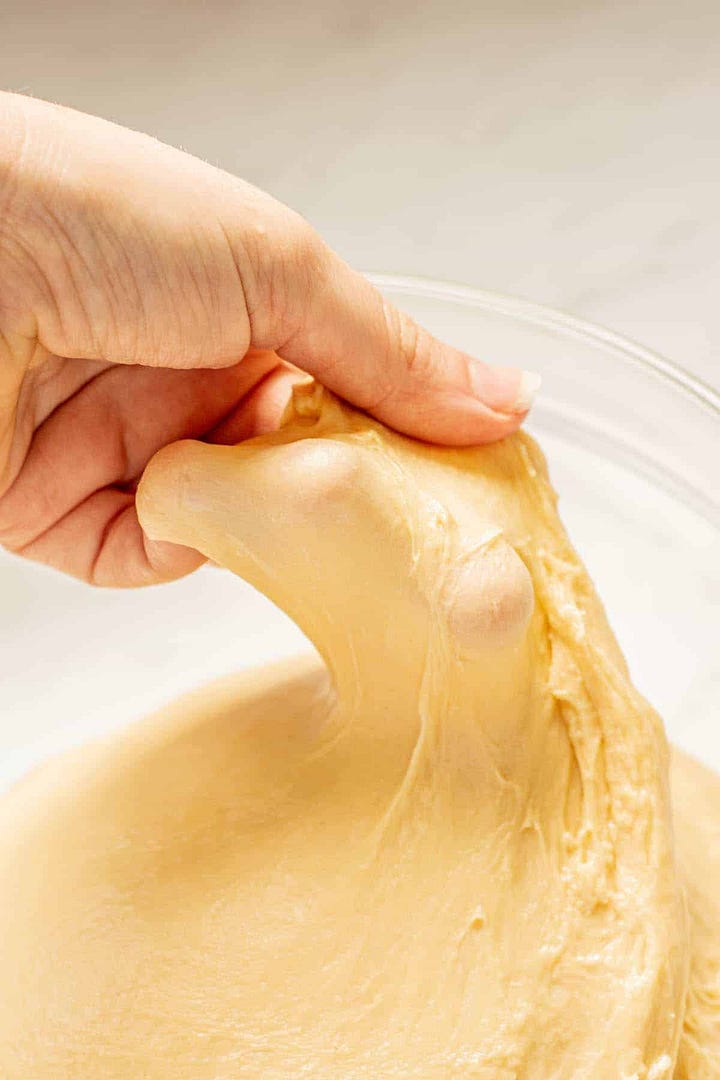
Mix the dough for at least 15 minutes for the best gluten development and brioche crumb. Proper gluten development allows you to stretch the dough so thin you can almost see through it (the window pane test.)
Pull the dough from the bowl onto a bench and form it into a ball. Place the dough ball into a clean bowl, cover it with plastic wrap or a damp kitchen towel, and let it rise for 1-2 hours (depending on room temperature) until doubled in size.
Deflate the dough gently and reshape it into a ball again. Cover it with a lid or plastic wrap and place it in the refrigerator overnight. This step can be shortened, but an 8-12 hour fridge proof gives the best flavour.
Cold Proof
If you want to skip the overnight proof, the dough will still need at least an hour of fridge rest after room temperature proofing. This cold rest will let the butter stiffen, resulting in easier shaping.
Pull the proofed dough from the bowl and tip it onto a lightly floured bench. Shape it into a round, then divide it into two equal portions. Line two 8.5 x 4.5-inch (21x11cm) loaf pans with parchment paper.
Shaping options
Option 1. Divide a portion of the dough into eight equal-sized pieces. Roll each piece into a tight ball and place the balls in a lined tin, side by side, in two rows.
Option 2. Divide a portion of the dough into three equal-sized pieces. Roll each piece into a long roll, about 30cm in length. Braid the three lengths together, tuck in the ends, and place the braided dough into the lined tin.
Let the shaped dough rise in a warm spot until it has doubled.
Baking
Preheat the oven to 375°F/190 °C and gently whisk an egg and one tablespoon of water in a small bowl. Brush the tops of the dough with the egg wash.
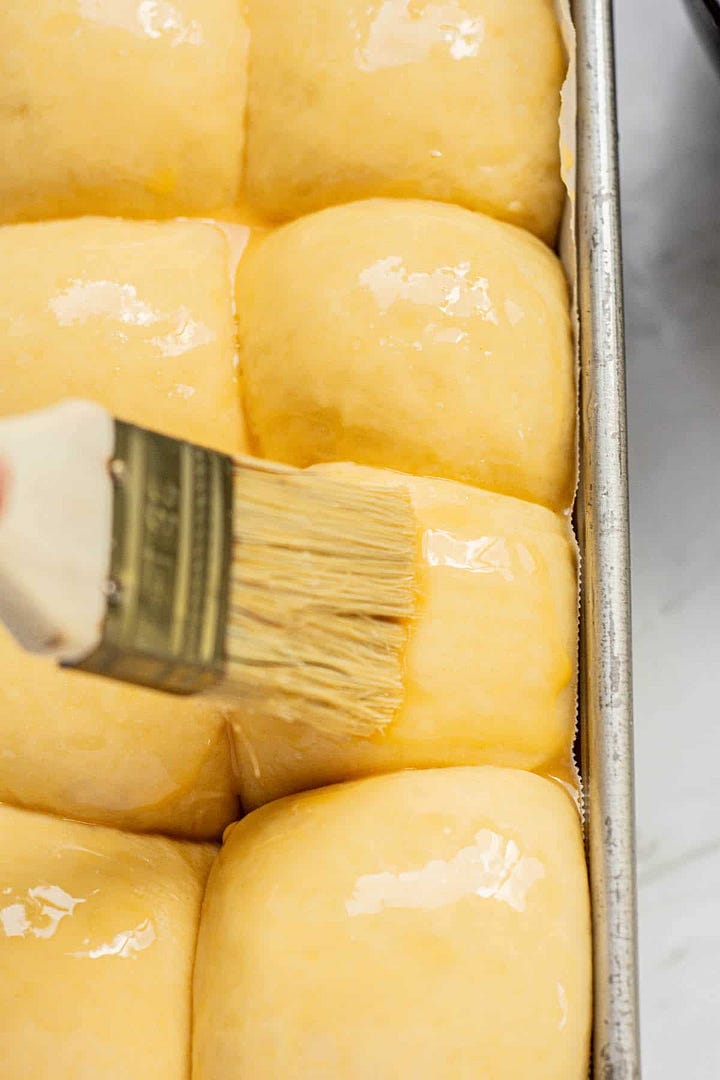

Bake the brioche bread for approximately 30 minutes until a deep golden brown.
Once baked through, it should sound hollow when tapped. If you have an instant-read thermometer, you can check for an internal temperature of 195°F / 90°C. Let the brioche bread cool before slicing.
More brioche recipes
Soft Brioche Cinnamon Rolls
Here’s a recipe for deliciously tender brioche cinnamon rolls. They’re fluffy, filled with cinnamon sugar, and iced with a vanilla cream cheese glaze.
Pumpkin Brioche Bread
This soft and tender pumpkin brioche is made with lots of butter, eggs, and pumpkin puree. It’s gently spiced and lightly sweetened, making the perfect bread for gourmet sandwiches or as the base for French toast or bread pudding.
Happy baking!




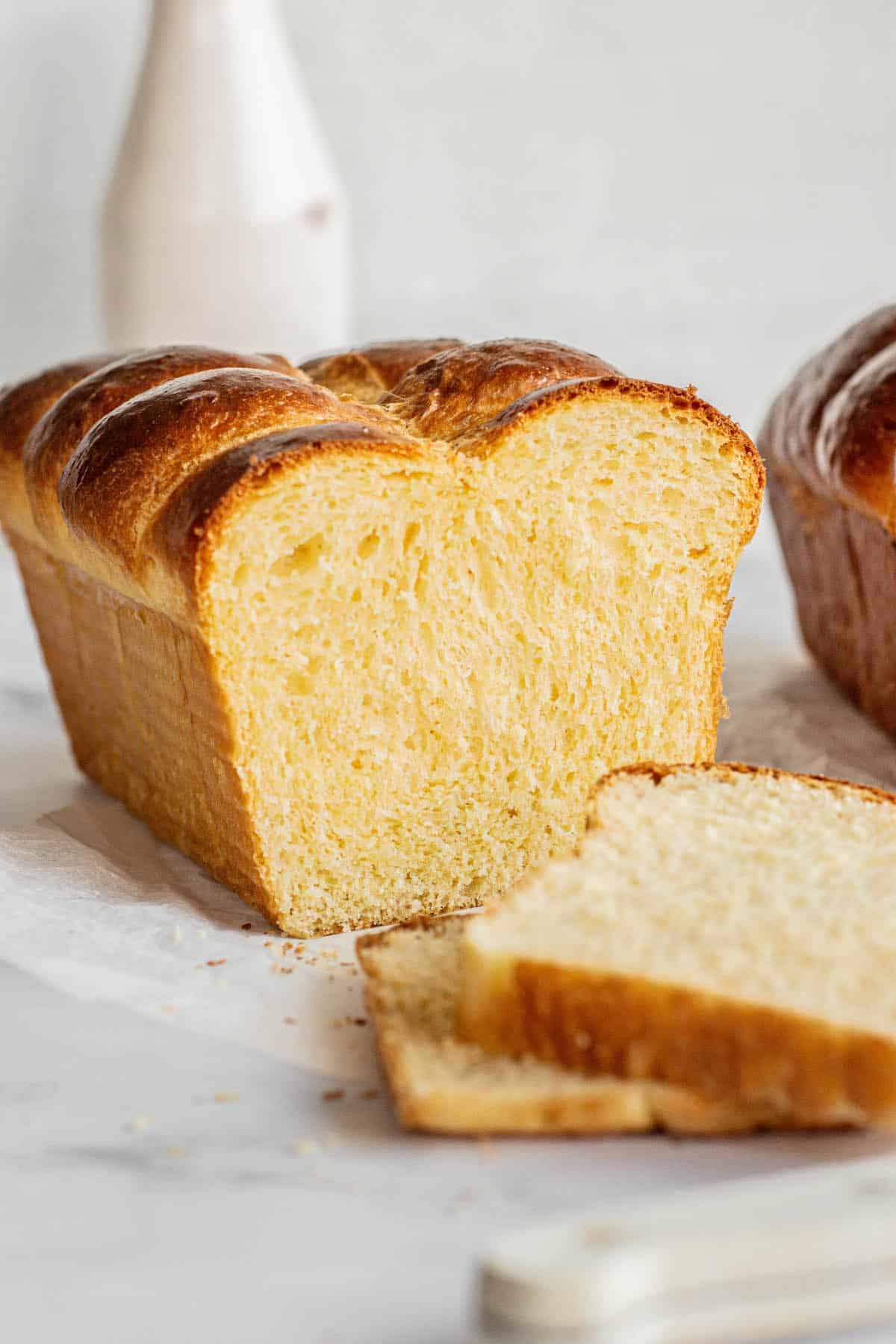
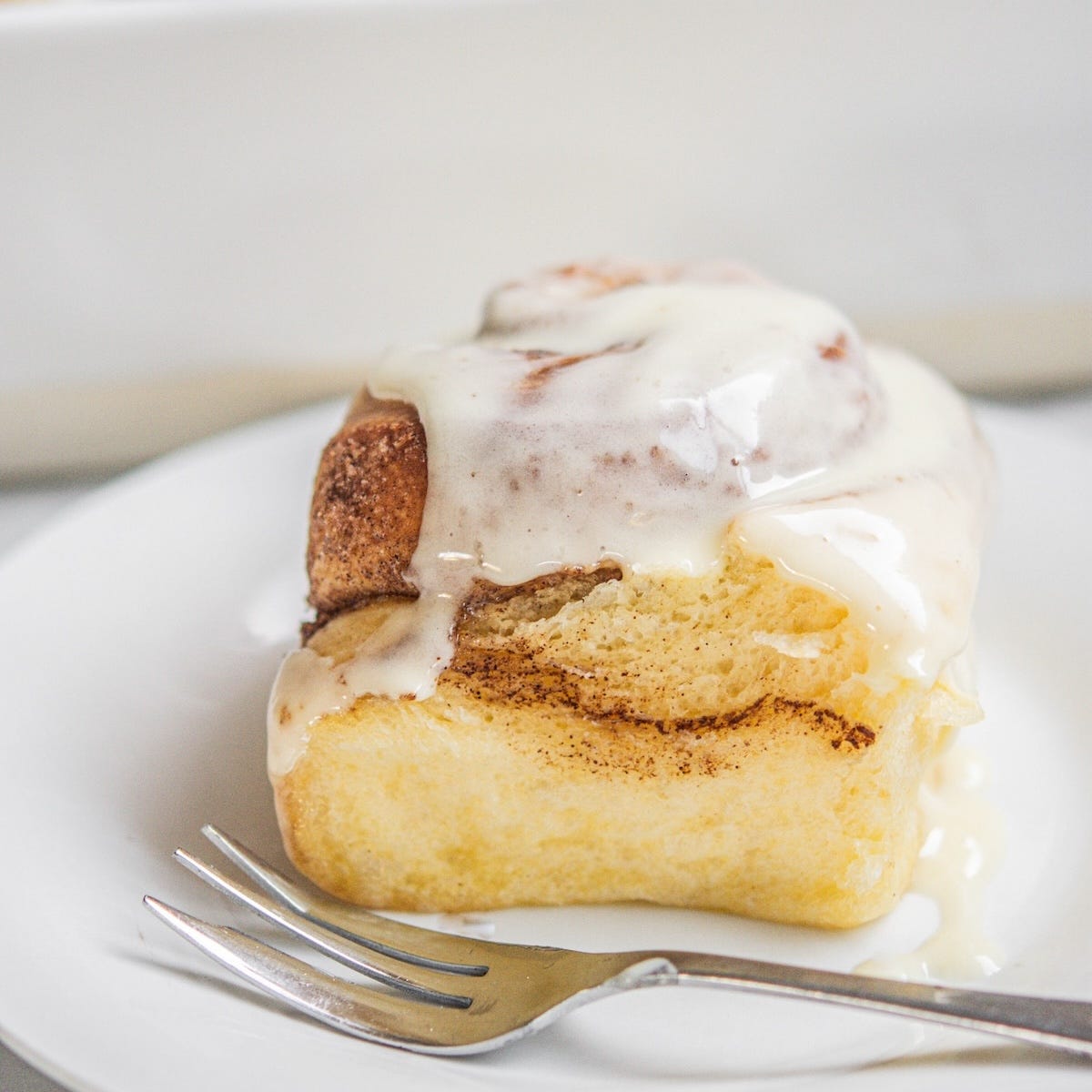
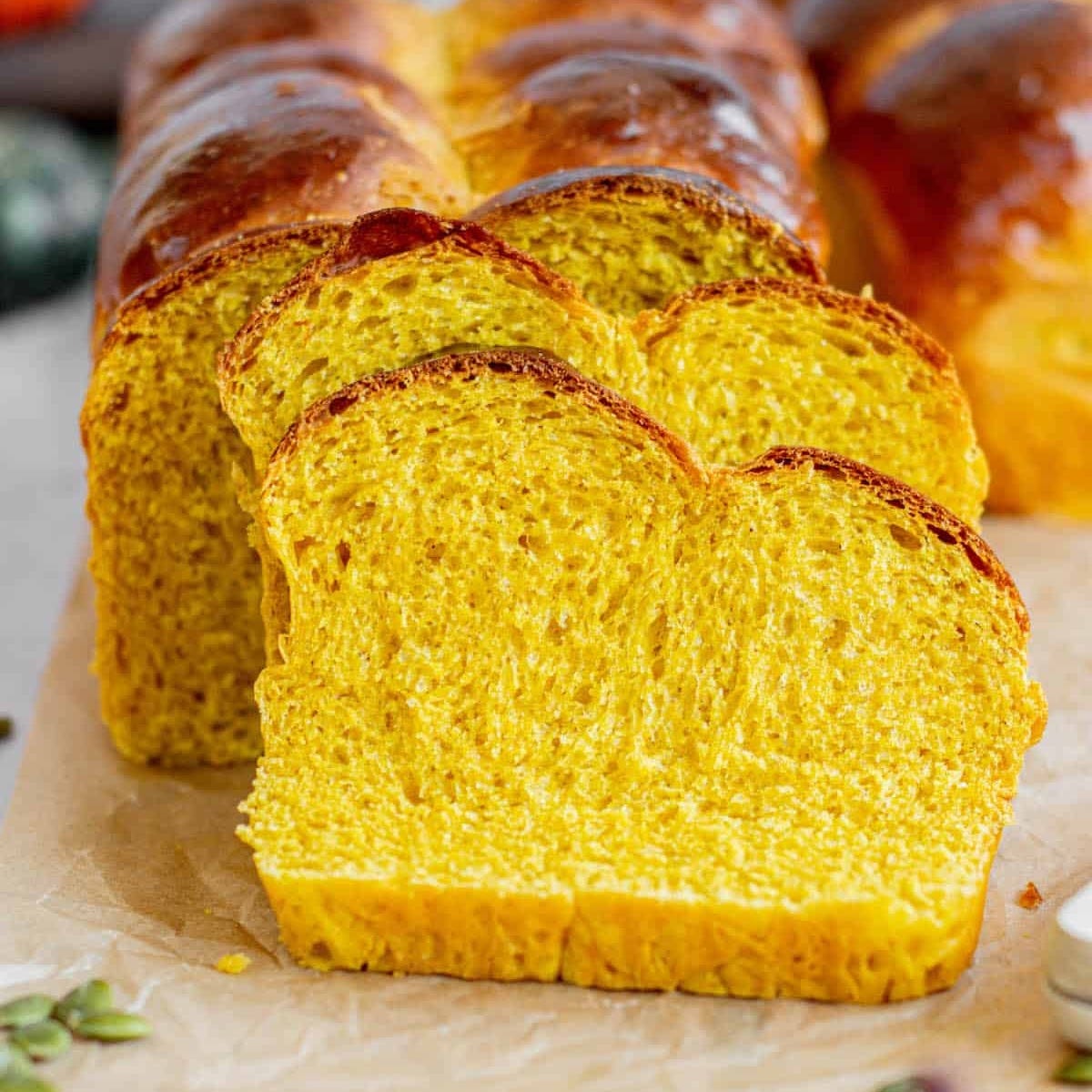
How do you make this sourdough?